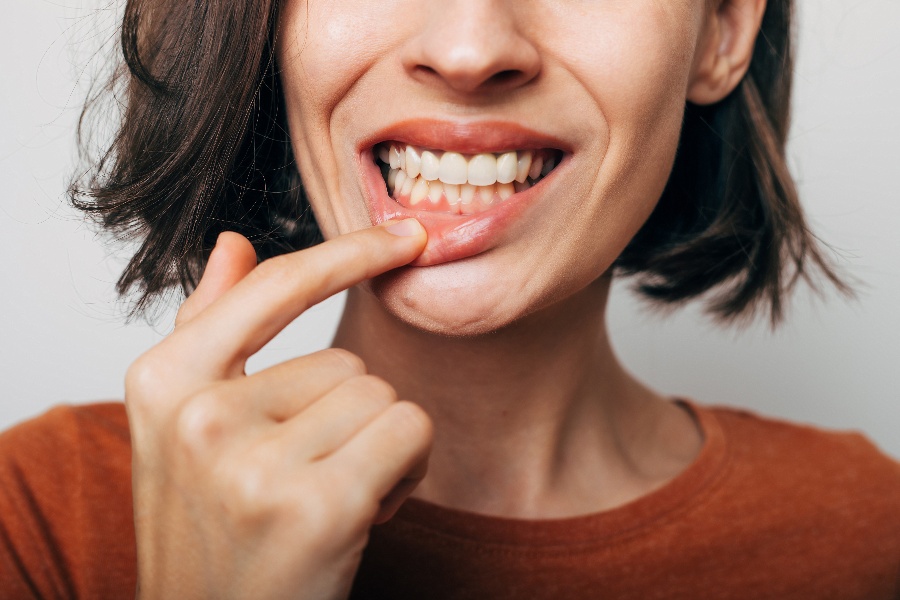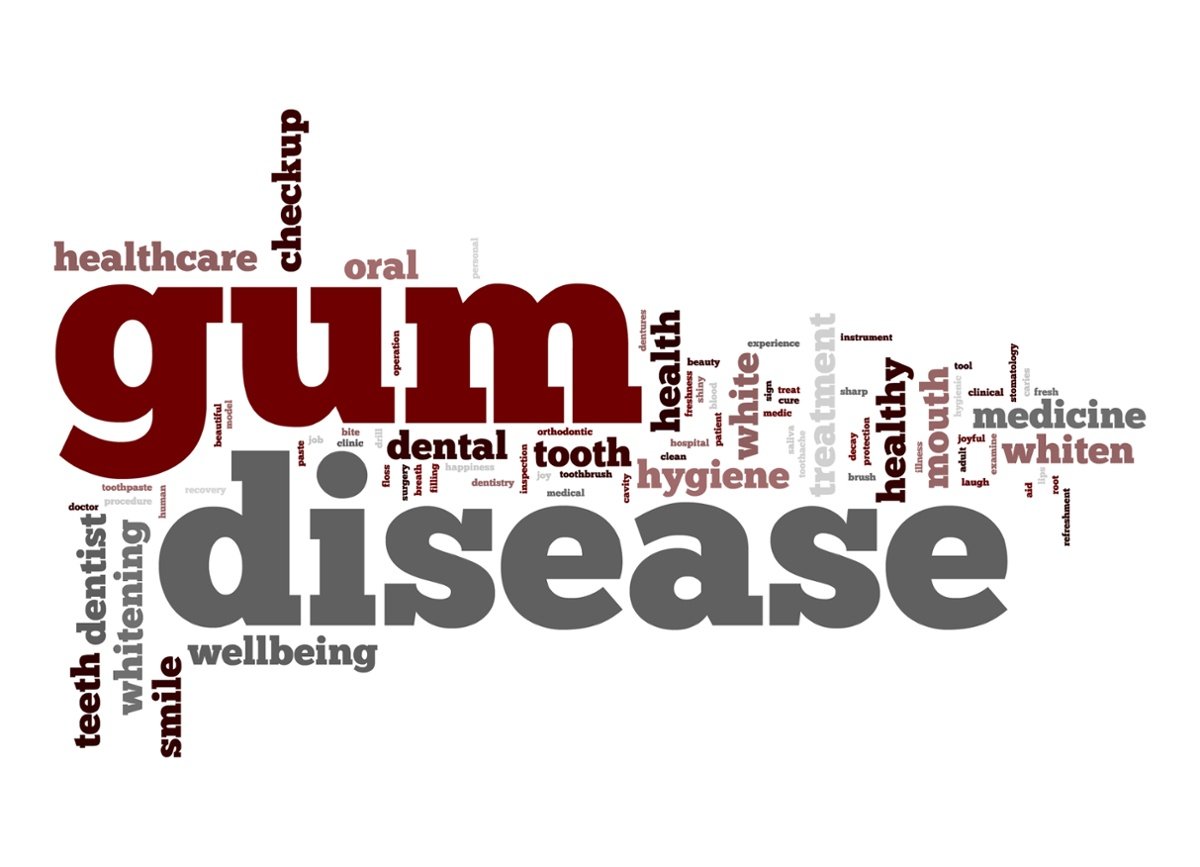Periodontal disease is a common dental problem that affects millions of people worldwide. It is a condition that results in inflamed or infected gums and bone that surround and support your teeth. It ranges from a mild condition, gingivitis, to a more severe disease, periodontitis. The Centers for Disease Control and Prevention (CDC) found that almost half of adults 30 years and older have some form of periodontal disease. Gaining a thorough understanding of periodontal disease can help you prevent the possible problems it causes, including tooth loss.
Causes of Periodontal Disease
Periodontal disease, or gum disease, is caused by dental plaque buildup, a sticky film of bacteria that forms on your teeth. While good oral hygiene practices can help prevent periodontal disease, several factors can increase your risk of developing gum inflammation and infection, such as:
- Poor oral hygiene. Your body’s normal defenses can keep plaque-causing bacteria under control with good oral care, such as brushing and flossing.
- Smoking. Smoking is one of the most influential risk factors for developing and causing periodontal disease to worsen. Smoking increases the risk by damaging the gum’s blood flow and ability to heal.
- Genetics. Studies show that 30% to 50% of people are more susceptible to periodontal disease based on genetic factors.
- Hormonal changes. Hormonal changes that occur during pregnancy and menopause can make you more sensitive to plaque and the initiation of gum inflammation.
- Diabetes. Diabetes can affect your ability to fight off infection, including infections in the gums.
- Medications. Certain medications can cause dry mouth, which affects the amount of plaque buildup in your mouth.
- Age. The risk of periodontal disease increases as we age, with more than two-thirds of adults over age 65 having periodontal disease.
- Stress. Stress can weaken your immune system, making fighting infections like gum disease harder.
- Poor nutrition. A diet low in essential nutrients like vitamin C and calcium can increase your risk of periodontal disease.
- Teeth grinding. Grinding or clenching your teeth can put extra pressure on your gums, leading to inflammation and gum disease.
- Misaligned teeth. Misaligned teeth can make removing plaque and bacteria from your teeth and gums more difficult, leading to inflamed gums.
Symptoms of Periodontal Disease
Gum disease begins as mild inflammation, known as gingivitis. At this early stage, you likely have no pain or other symptoms. However, as the disease progresses, you may notice one or several symptoms, such as:
- Red, puffy, or tender gums.
- Gums that bleed when brushing or flossing.
- Gums that recede and pull away from the teeth, exposing the tooth’s root.
- Sensitive teeth due to exposed roots.
- Tender or painful teeth when chewing.
- Persistent bad breath even after brushing and flossing.
- Loose teeth due to bone loss.
- Changes in your bite due to shifting teeth.
- Gum infections or abscesses.
- Metallic taste in your mouth.
Stages of Periodontal Disease
Periodontal disease is typically divided into stages, such as these four:
Stage 1: Gingivitis - This is the earliest stage of gum disease, and it occurs when the gums become red, swollen, and tender. There may be some bleeding when brushing or flossing at this stage, but the damage is still reversible with proper treatment. This is the only reversible stage of periodontal disease.
Stage 2: Early periodontitis - If the bacteria causing your gingivitis are not removed, the supporting bone that holds the teeth in place may start to become affected by the inflammation. The gums may then recede, and pockets of bacteria and debris may form between your teeth and gums.
Stage 3: Moderate periodontitis - The pockets between the teeth and gums become deeper, and the damage to the bone becomes more severe. Teeth may start to feel loose or shift, and there may be changes in your bite.
Stage 4: Advanced periodontitis - This is the most severe stage of gum disease, and it can lead to tooth loss. The pockets between the teeth and gums become infected, may drain pus, and can become so deep that the teeth become loose or fall out. In addition, the bone that supports your teeth may be severely damaged and cause your bite to change significantly.
How Periodontal Disease is Diagnosed
The earlier periodontal disease is diagnosed, the better the chances of successful treatment and a return to improved gum health. There are different aspects to diagnosing periodontal disease, including:
- Clinical examination. The first step in diagnosing periodontal disease is a thorough examination of your mouth, gums, and teeth. Your dentist will check for symptoms such as bleeding, swollen or red gums, and pockets between your teeth and gums.
- X-rays. Dental radiographs can help identify dental issues, such as cavities, that can contribute to periodontal disease.
- Periodontal probing. This simple and painless procedure involves measuring the depth of the pockets between your teeth and gums. These measurements serve as a baseline for how effective treatment will be in the future.
- Other tests. Sometimes, your dentist may recommend other tests to help diagnose periodontal disease, such as a bacterial culture to identify the type of bacteria causing the disease.
How Periodontal Disease is Treated
Your treatment for periodontal disease will be determined by how quickly it is diagnosed and the severity of your condition. The treatments can include one or more of the following:
- Deep cleaning (Scaling and root planing). Scaling and root planing are common treatments for early-stage gum disease. Scaling involves removing plaque and dental calculus, or tartar, from around your teeth and beneath your gums. Root planing smooths out any rough spots on the roots to help prevent further plaque buildup.
- Periodontal surgery. Advanced periodontitis may require one or more surgical procedures, depending on the amount of gum and bone damage. Periodontal surgical procedures include flap surgery, bone grafts, soft tissue grafts, and tissue-guided regeneration.
- Laser therapy. A specialized dental laser light gently removes the bacteria causing damage to your gums and bone. Additionally, the laser removes diseased tissue from the deep pockets surrounding your teeth.
How Periodontal Disease is Prevented
Like tooth decay, periodontal disease is preventable with proper home and professional care. Some of the steps you can take include the following:
- Brush your teeth at least two times each day for two minutes.
- Floss daily.
- Use a mouthwash recommended by your dentist.
- Eat a nutritious diet that is low in sugar.
- Don’t smoke.
- See your dentist regularly for professional teeth cleaning and examination.
Schedule an Appointment
For more information and help preventing periodontal disease, call us or contact us online for a comprehensive examination with Palmetto Dental Arts.





